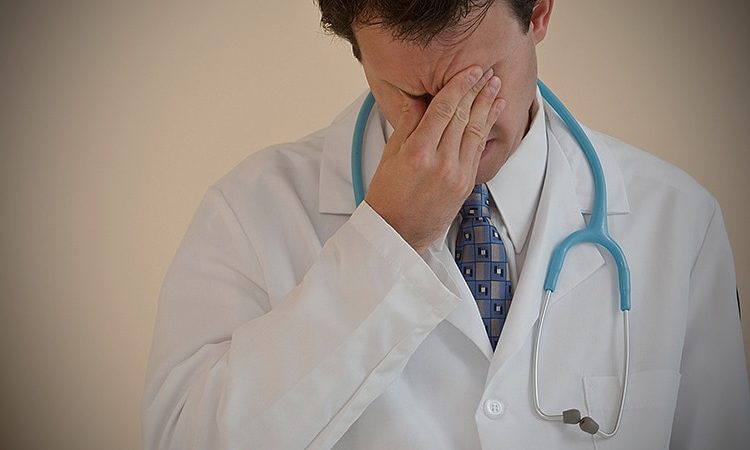INDIANAPOLIS — Much of what we know about depression, anxiety, and suicide among healthcare professionals comes from investigations into the mental health of physicians and medical students. Now, new research is shedding light on how common these mental health conditions are among physician assistants (PAs) and PA students, Talia Sierra, PA-C, DMSc, told attendees in a session at the American Academy of Physician Associates 2022 annual meeting.
Sierra and co-presenter Heidi Posey, PA-C, both professors in the PA program at Idaho State University, surveyed PA students and practicing PAs about their experiences with depression, anxiety, and suicide.
They found that PAs and student PAs reported feelings of depression, anxiety, or thoughts of suicide at about the same rate physicians and medical students did. Their research is currently under review by the Journal of the American Academy of PAs.

Dr Talia Sierra
“We know there’s a perception that PAs have a better quality of life than physicians do, and that many choose to become PAs for that reason,” Sierra told Medscape Medical News. “They think they’ll be able to avoid burnout and not have the same problems we see in physicians, but our research shows that’s not always the case.”
This was a key takeaway for Jared Papa, PA-C, MPAS, a colleague of the presenters who attended the session, but was not involved with the research. “We’ve kind of suspected that PAs and PA students have equivalent rates of anxiety and depression as our physician colleagues and medical students, but haven’t had data to back that up,” he said. “But this knowledge allows us to apply some of the resources used for physicians’ mental health, knowing they’re applicable to our profession.”
Mental Health Results of PAs Comparable to Physician Data
A total of 1050 PAs and students responded to the survey. Fourteen percent of practicing PAs were found to be at moderate to severe risk for depression, whereas 25% of student PAs fell into that moderate to severe risk category.
For anxiety, 12% of practicing PAs reported moderate to severe symptoms, with an additional 21% reporting mild symptoms. Among PA students, 21% reported moderate to severe symptoms and an additional 21% had mild symptoms.
When it came to suicide risk, PA students diverged from practicing PAs. Sierra and Posey found that 3.5% of PA students indicated suicidal ideation during program orientation. By the middle of their first year, that number increased to 7.4%.
When asked if they had ever felt suicidal or attempted suicide since the start of their career, 8.2% of PAs said they had, while 8.1% of PA students had. When asked if they had attempted suicide, only 0.4% of PAs had, but 3.2% of PA students had.

Heidi Posey, PA-C
“That tells me we need to be thinking more about the mental health of our PA students and assessing what we’re asking them to do,” said Posey “We need to get away from that culture of hazing and making things intentionally difficult just because that’s how they were for us.”
Additionally, 36% of PAs and 32% of PA students said they never told anyone about their suicidal thoughts. The most common reasons given for not seeking help were that the symptoms weren’t severe enough, they were too busy, they could deal with it without a professional, and they feared disclosure.
For comparison, Medscape’s 2022 Physician Burnout & Depression Report found that about 1 in 5 doctors say they experienced depression. And 1 in 10 doctors told Medscape they have thought about or attempted suicide, according to Medscape’s 2022 Physician Suicide Report.
What to Look For
For Posey and Sierra, these findings mean there’s an unmet need for mental health information in the profession, to help PAs and PA students recognize and seek help when needed, whether for themselves or colleagues.
“As PAs and PA students, we are inherently predisposed to higher rates of depression, anxiety, and suicidality than the general population,” said Sierra, who co-founded The Burn Clinic, a nonprofit healthcare provider burnout consulting company, along with Posey. “We need to be aware and not ashamed of this and be willing to acknowledge it and help ourselves and help others.”
PAs who sense a colleague is struggling should not hesitate to share their concerns with that person, Posey said. “Reach out to them from the heart to listen, empathize, let them know you will be there and make sure they know about resources in your area,” she said. “Raise the issue privately and, if you’re a supervisor, emphasize that you’re speaking as a colleague, not their boss.”
Posey encourages periodic self-reflection, too. “Just like it can be challenging to recognize distress in our peers, it can be all too easy to overlook feelings of hopelessness in ourselves,” she said. “Give yourself the same kind of support you would offer a colleague. No one needs to suffer alone.”
Resources
If you or someone you know is experiencing suicidal thoughts or a crisis, please reach out immediately to the National Suicide Prevention Lifeline at 800-273-8255 or text HOME to the Crisis Text Line at 741741. These services are free and confidential.
-
The 988 national three-digit code will go live on July 16, to replace the National Suicide Prevention Lifeline’s nine-digit number.
-
Many states offer a suicide prevention/crisis hotline.
-
State medical associations often offer support and resources that are available to all medical professionals, not just physicians.
American Academy of Physician Associates 2022 Annual Meeting. Presented May 21, 2022.
For more news, follow Medscape on Facebook, Twitter, Instagram, YouTube, and LinkedIn
Source: Read Full Article
